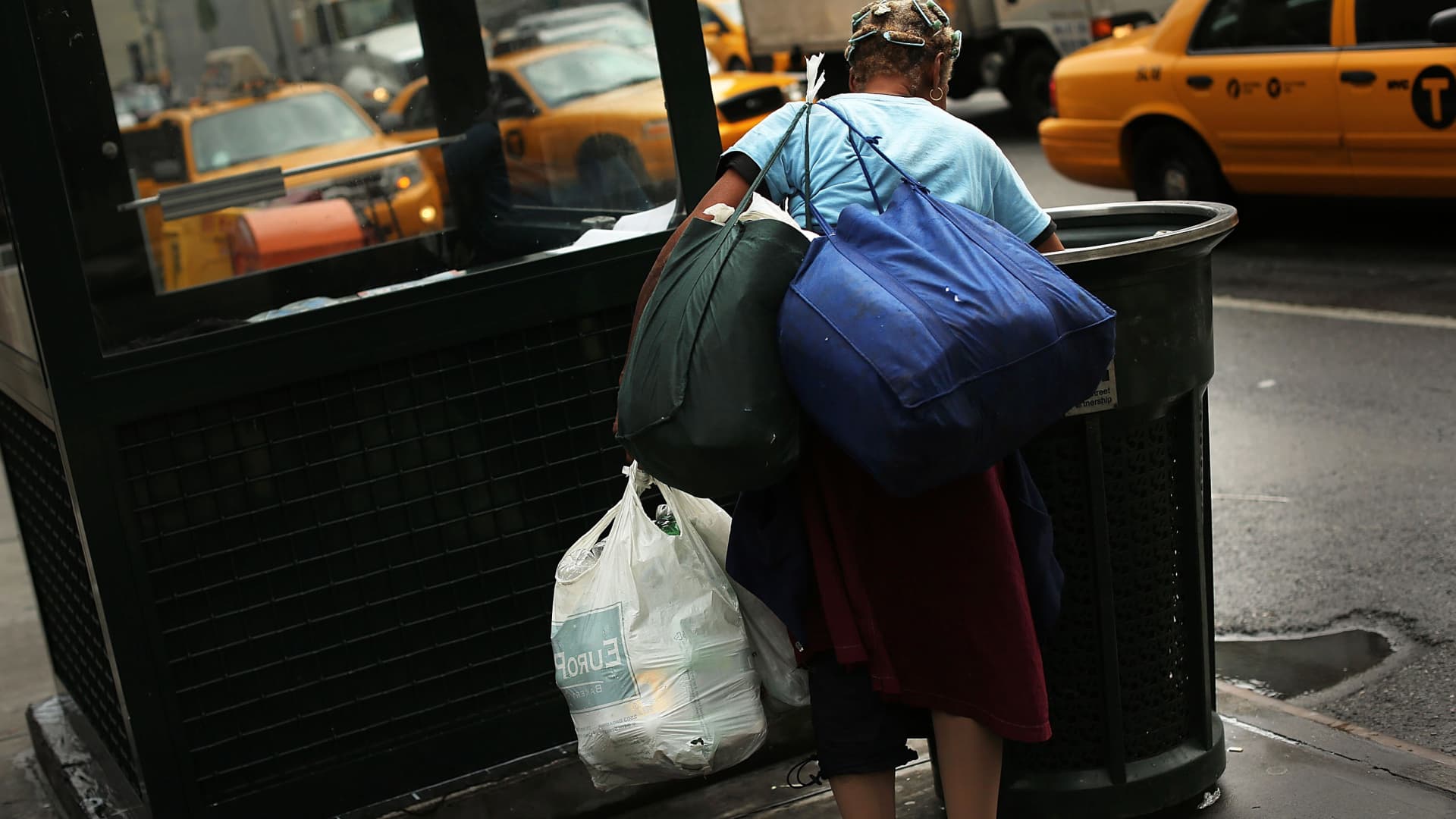Over the last 50 years, the poverty rate in the U.S. has barely budged: Around 11% of the U.S. population was considered poor in 2019. In 1970, just about 12% was.
“There is no real improvement here, just a long stasis,” sociologist Matthew Desmond writes in his new book, “Poverty, by America.” His last book, “Evicted: Poverty and Profit in the American City,” won the 2017 Pulitzer Prize for general nonfiction.
In his latest book, Desmond explores the reason for that stagnation and suggests that many Americans and corporations profit from tens of millions of people having so little. Banks make billions a year in overdraft fees. Companies are able to pay their workers low wages and save on benefits.
More from Personal Finance:
The IRS plans to tax some NFTs as collectibles
Here’s how to vet online financial advice
‘Staying the course is the play’ for investors
His book is filled with statistics that bring the inequitable state of the U.S. economy into sharp focus. Here are five of them.
1. Wages rose slowly for the poorest Americans
Since 1979, the bottom 90% of income earners in the U.S. experienced annual earnings gains of only 24%, Desmond writes, while the wages of the top 1% of earners more than doubled. His findings are based on data from a number of sources, including the U.S. Bureau of Labor Statistics and the Pew Research Center.
Looking at inflation-adjusted earnings, ordinary workers have seen their pay tick up just 0.3% a year for several decades, Desmond writes. “Astonishingly, the real wages for many Americans today are roughly what they were 40 years ago.”
2. More government aid for the financially comfortable
In 2020, the federal government spent $53 billion on direct housing assistance for the needy. That same year, it shelled out over $193 billion on homeowner subsidies such as the home mortgage interest deduction. Desmond analyzed tax data from a number of sources, including the Office of Management and Budget.
“Most families who enjoy those subsidies have six-figure incomes and are white,” Desmond writes. “Poor families lucky enough to live in government-owned apartments often have to deal with mold and even lead paint, while rich families are claiming the mortgage interest deduction on first and second homes.”
3. 1 in 18 live in ‘deep poverty’
In his book, Desmond, analyzing data from the U.S. Census Bureau and other sources, reports that 1 in 18 people in the U.S. live in what’s considered “deep poverty,” or what he calls “a subterranean level of scarcity.”
In 2020, this category included people who make less than $6,380 a year, or families of four living on less than $13,100. In 2020, almost 18 million people in America lived in these conditions, including some 5 million children.
“There is growing evidence that America harbors a hard bottom layer of deprivation, a kind of extreme poverty once thought to exist only in faraway places of bare feet and swollen bellies,” Desmond writes.
4. Racial wealth gap is as large as in the ’60s
Looking at the work of other authors and Federal Reserve data, Desmond found that the racial wealth gap is as wide today as it was more than five decades ago.
In 2019, the median white household had a net worth of $188,200, compared with $24,100 for the median Black household.
“Our legacy of systematically denying Black people access to the nation’s land and riches has been passed from generation to generation,” he wrote.
Most first-time homebuyers, he explains, get down-payment help from their parents. And many of those parents are able to assist their children by refinancing their own homes, “as their parents did for them after the government subsidized homeownership in white communities in the wake of World War II.”
5. Overdraft fees mostly paid by the poor
In 2019, the largest U.S. banks charged Americans $11.68 billion in overdraft fees, Desmond found, looking at a number of reports, including from the Center for Responsible Lending.
Just 9% of those account holders paid the lion’s share, 84%, of those charges — customers who carried an average balance of less than $350.
“The poor were made to pay for their poverty,” Desmond wrote.
